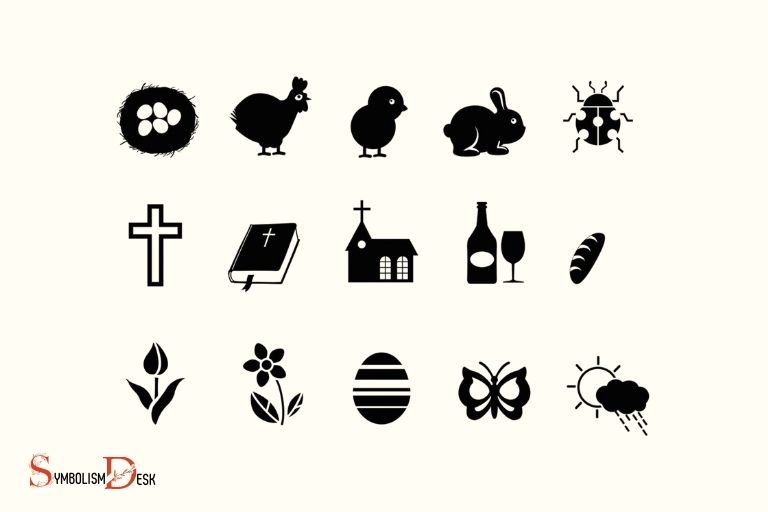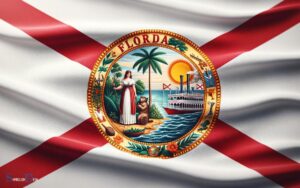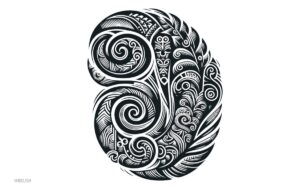What Do the Easter Symbols Mean? Fertility!
Easter symbols, steeped in tradition and religion, signify the resurrection of Jesus Christ from the dead.
The Easter Bunny represents fertility and new life, while Easter Eggs signify rebirth and resurrection. The Cross stands as a symbol of faith and Jesus’ sacrifice, and the Easter Lilly symbolizes purity, hope and life.
The Easter Bunny is a folkloric figure often associated with the Germanic goddess Eostre, who was celebrated during the spring equinox.
Over time, the Easter Bunny was incorporated into Christian celebrations, representing new life and fertility. Easter Eggs, painted with bright colors, represent Jesus’ resurrection, the rebirth of life.
The Cross is a powerful Christian symbol signifying Jesus’ sacrifice for humanity’s sins. Lastly, the Easter Lilly, blooming during spring, symbolizes purity, hope, and life, mirroring the resurrection of Jesus.
Whether through the portrayal of the Easter Bunny, the vibrant Easter Eggs, the solemnity of the Cross, or the bloom of the Easter Lilly, Easter symbols carry deep significances.
Each focuses on the themes of rebirth, resurrection, and new life, encapsulating the essence of Easter and the hope it brings.
7 Symbols and Meanings of the Easter
| Symbols | Meanings |
|---|---|
| Easter Eggs | The Easter egg is a symbol of the resurrection of Jesus. It represents a new life, just as a chick might hatch from the egg. |
| Cross | The cross is a representation of the crucifixion of Jesus. It is a symbol of his sacrifice for human sins. |
| Easter Bunny | The Easter bunny is thought to symbolize fertility and new life, a theme consistent with the celebration of Easter. |
| Palm branches | Palm branches represent the arrival of Jesus in Jerusalem, where people greeted him with palm branches. This event is celebrated on Palm Sunday, the week before Easter. |
| Lamb | The Lamb of God symbolizes Jesus and his sacrifice. In many Christian denominities, He is often referred to as the “Lamb of God”. |
| Empty Tomb | This symbolizes Jesus’s resurrection after his crucifixion. It is often represented by an empty cave or tomb. |
| Easter Lily | The Easter Lily represents purity, hope, and life. It’s a symbol of Jesus’s resurrection, blooming in the spring near Easter. |
Key Takeaway

Five Facts About: The Easter Symbols Meanings
The Cross
The cross is one of the most recognized symbols of christianity. It is a powerful representation of the ultimate sacrifice given by jesus christ, and a reminder of the redemption and hope that his resurrection brought to the world.
In this section, we will delve deeper into the meaning of the cross, explore its variations, and explain its different interpretations.
Discuss How The Cross Symbolizes The Crucifixion And Resurrection Of Jesus
- The cross represents the crucifixion of jesus christ, where he was hung on a cross to die as a punishment for our sins.
- It is a symbol of sacrifice, mercy, and love, as jesus gave up his life to save us from the consequences of our sins.
- The cross also represents the resurrection of jesus christ, which is the cornerstone of christian faith. His resurrection defeated death and brought salvation and eternal life to the world.
- The cross is a testament to the ultimate triumph of good over evil, and the power of god’s love to overcome the most severe trials and suffering.
Explore The Variations Of Crosses, Including The Latin, Greek, And Celtic Crosses
- The latin cross, also known as the christian cross, is the most commonly recognized form of the cross. It is a simple representation of the cross, with a longer vertical beam and a shorter horizontal beam.
- The greek cross, also known as the cross of saint andrew, has arms of equal length, forming a square shape.
- The celtic cross, also known as the irish cross, has a circular ring around the intersection of the vertical and horizontal beams, which symbolizes the eternal love of god.
- Each cross has its unique design, but they all share the same significant meaning of sacrifice, love, and hope.
Explain The Different Interpretations Of The Cross And Its Significance
- Some see the cross as a symbol of suffering, carrying a heavy burden that represents our sins and shortcomings.
- Others interpret the cross as a symbol of forgiveness, where jesus’ sacrifice for our sins allows us to be forgiven and redeemed.
- The cross also represents the gift of grace, where we receive the gift of eternal life and salvation from god’s love.
- The significance of the cross lies in the endless hope and never-ending love that it represents.
The cross is an emblematic symbol of christianity that encapsulates the sacrificial love and resurrection of jesus christ, as well as the hope and forgiveness that he brought to the world. It is a powerful reminder of god’s eternal love for us and the ultimate triumph of good over evil.
Describe The Origins Of The Easter Bunny In Pagan Traditions And Christian Folklore
- The easter bunny has its origins in pagan traditions, specifically the festival of eostre, the goddess of fertility and spring.
- According to legend, eostre found a wounded bird and transformed it into a hare, which then laid eggs for her as a sign of gratitude.
- In christian folklore, the easter bunny is said to have first appeared in germany in the 16th century as a symbol of the resurrection.
- The rabbit is associated with rebirth and new life, as it is known for its ability to reproduce rapidly.
Discuss How The Easter Bunny Represents New Life And Fertility
- The easter bunny is a symbol of new life and fertility because rabbits are known for their ability to reproduce quickly and in large numbers.
- Rabbits are also associated with the spring season, which marks the beginning of new growth and renewal.
- The tradition of hiding easter eggs for children to find is also linked to the easter bunny’s symbolism of fertility, as eggs are a symbol of new life and growth.
Explain The Symbolism Behind Easter Eggs And Their Association With The Easter Bunny
- Easter eggs have been a tradition for centuries, long before the easter bunny was associated with the holiday.
- Eggs are a symbol of new life and rebirth, as well as a representation of the empty tomb of jesus christ after his resurrection.
- The tradition of coloring and decorating easter eggs is said to have originated in medieval europe, where eggs were given as gifts to celebrate the end of the lenten season.
- The association between the easter bunny and easter eggs may have originated from the hare’s reputation for laying eggs, as well as its association with fertility and new life.
The easter bunny has become an iconic symbol of easter, representing new life, growth, and fertility.
Its origins in pagan traditions and christian folklore highlight the importance of these themes during the spring season. The symbolism behind easter eggs further emphasizes the theme of rebirth and new beginnings.
The Lamb
Symbol Of Jesus As The Sacrificial Lamb
The lamb has been a symbol of jesus as a sacrificial lamb since ancient times. In christianity, the lamb is considered a representation of purity and innocence, and jesus was described as “the lamb of god” in the new testament.
Here are a few key points to consider about the symbolism of the lamb:
In the old testament, lambs were frequently sacrificed as part of jewish religious ceremonies. The lamb was seen as a pure and innocent creature that could atone for the sins of humans.
The book of isaiah prophesied that a “suffering servant” would come who would bear the sins of the people. This figure of the “suffering servant” is commonly associated with jesus, who was seen as the ultimate sacrifice to redeem humanity from their sins.
Jesus was arrested and put on trial during the jewish holiday of passover, when lambs were traditionally sacrificed. This was seen as a symbolic connection between jesus and the sacrificial lambs of the jewish tradition.
The apostle paul, writing in the new testament, described jesus as a “sacrifice of atonement” who had redeemed humanity through his blood.
The image of the lamb was closely tied to this concept of redemption, as jesus was seen as the ultimate sacrificial lamb who had saved humanity from its sins.
Biblical References To Lambs In Christianity
The symbolism of the lamb is deeply woven into the fabric of christianity, and it appears frequently throughout the bible.
Here are a few key references to lambs in the bible:
- In the old testament book of genesis, the story of abraham’s sacrifice of his son isaac features a replacement sacrifice of a lamb. This is seen as a foreshadowing of the sacrifice of jesus, who is often described as the “lamb of god” who takes away the sins of the world.
- The book of exodus tells the story of the passover, when god “passed over” the houses of the israelites who had marked their doors with the blood of a lamb. This is seen as a symbol of redemption and salvation.
- In the new testament book of revelation, jesus is described as a “lamb standing as if it had been slain.” This image serves as a reminder of jesus’ sacrifice and his ultimate victory over death.
Cultural Relevance Of Lambs As Symbols Of Innocence And Purity
The image of the lamb as a symbol of peace, innocence, and purity has deep cultural roots that go back centuries.
Here are a few key points to consider about the cultural relevance of lambs:
- In many cultures, lambs are seen as symbols of new life and rebirth. This is due to the fact that lambs are often born in the spring, which is traditionally associated with new beginnings and fertility.
- The idea of the “sacrificial lamb” is also a deeply ingrained cultural concept that appears in many different traditions. For example, in ancient greek mythology, the god zeus was said to have transformed himself into a white ram in order to escape from his angry wife.
- The image of the lamb as an innocent creature has been used in numerous works of art and literature over the years. For example, william blake’s poem “the lamb” describes a sweet and innocent animal that serves as a symbol of christ’s love and compassion.
The lamb has a rich history of symbolism in both religious and cultural contexts. It represents purity, innocence, and sacrifice, and has been used throughout history as a powerful image of redemption and salvation.
The Crown Of Thorns
Describe The Significance Of The Crown Of Thorns In Christianity
The crown of thorns is a significant symbol in christianity as it represents the suffering of jesus christ during his crucifixion.
The crown was made of a woven branch of thorn from the jericho rose plant and placed on jesus’ head by roman soldiers who mockingly called him the “king of the jews”.
The crown is important because it reminds christians of the immense sacrifice that jesus made for humanity.
Explain The History Of The Crown Of Thorns And Its Association With The Crucifixion Of Jesus
According to the bible, the crown of thorns was placed on jesus’ head during his trial and crucifixion.
The crown was intended to cause pain and humiliation to jesus as the soldiers mocked him. After jesus’ death, the crown of thorns was passed down through different collections and eventually ended up at the notre dame cathedral in paris.
The crown of thorns is still on display at the cathedral and is one of the most revered relics of christianity.
Explore The Different Interpretations Of The Crown Of Thorns And Its Symbolism
The crown of thorns has various interpretations and meanings.
Some of them are:
- The crown of thorns represents the burden and pain that christians must endure in their faith and daily lives.
- It symbolizes humility and reminds christians to be humble in their actions and attitudes.
- The crown of thorns is a reminder of the injustice and suffering that exists in the world, and it calls upon christians to work towards justice and peace for all.
- It is also seen as a symbol of victory, as through jesus’ suffering and death, he ultimately triumphed over evil and death.
Overall, the crown of thorns is a powerful symbol that serves as a reminder of jesus’ sacrifice and the immense love that he had for humanity.
It is a symbol that inspires and motivates christians to continue the mission of spreading love and compassion in the world. It serves as a reminder of their faith and the teachings of Christ, encouraging believers to act selflessly in their daily lives. Just as the Aries symbol meaning is often associated with courage and determination, Christians are called to embody these traits in their efforts to bring hope and kindness to others. Through their actions, they aim to create a positive impact and reflect the light of their spiritual convictions to the world.
FAQ Abou The Easter Symbols Mean
What Is The Significance Of Easter Symbols?
Many symbols associated with easter have religious meanings that represent the rebirth and renewal.
Why Do We Color Easter Eggs?
Coloring eggs represents the resurrection and new life. It is a tradition that dates back to early christians.
How Does The Easter Bunny Relate To Easter?
The easter bunny represents new life and fertility. It is a tradition that began in germany and spread to other countries.
What Does The Easter Lily Symbolize?
The easter lily has come to represent the resurrection of jesus. The white petals represent purity and new life.
What Is The Meaning Of The Cross During Easter?
The cross is one of the most recognized symbols of christianity and represents the crucifixion and resurrection of jesus.
Conclusion
Easter celebration is a significant event worldwide, and it is rich in traditions and symbols that hold special meanings.
Understanding the significance of these symbols not only makes the easter celebration more meaningful, but it also gives us a deeper understanding of the christian faith.
From the egg to the cross and the lamb, each symbol conveys a unique message. The easter egg represents new life and the resurrection, while the cross symbolizes sacrifice and forgiveness.
The lamb is a symbol of christ, who was the lamb of god that takes away the sins of the world.
Other easter symbols such as easter lilies, hot cross buns, and the easter bunny are also rich in meaning.
Every symbol used in easter reminds us of the beauty and significance of this celebration. It is essential to embrace and appreciate the symbols of easter, not only for cultural reasons but also to support our faith and beliefs in christ.






